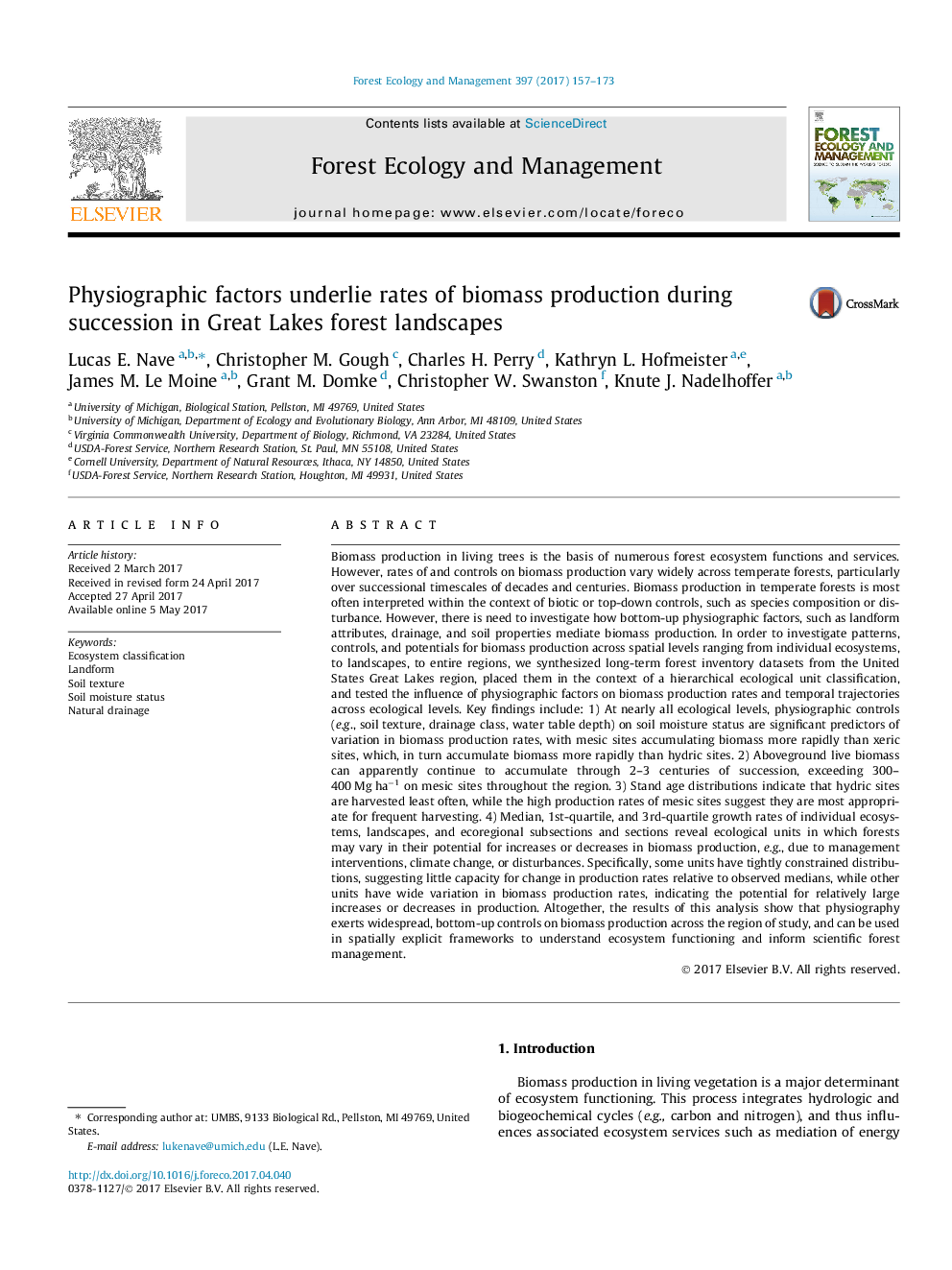| کد مقاله | کد نشریه | سال انتشار | مقاله انگلیسی | نسخه تمام متن |
|---|---|---|---|---|
| 6459363 | 1421361 | 2017 | 17 صفحه PDF | دانلود رایگان |
• Soil texture and wetness control biomass production at landscape to regional levels.
• Production is highest on mesic, intermediate on xeric, and lowest on hydric sites.
• Biomass accumulates linearly for at least 2–3 centuries of succession.
• Production rates, variability among ecoregional units can inform management options.
Biomass production in living trees is the basis of numerous forest ecosystem functions and services. However, rates of and controls on biomass production vary widely across temperate forests, particularly over successional timescales of decades and centuries. Biomass production in temperate forests is most often interpreted within the context of biotic or top-down controls, such as species composition or disturbance. However, there is need to investigate how bottom-up physiographic factors, such as landform attributes, drainage, and soil properties mediate biomass production. In order to investigate patterns, controls, and potentials for biomass production across spatial levels ranging from individual ecosystems, to landscapes, to entire regions, we synthesized long-term forest inventory datasets from the United States Great Lakes region, placed them in the context of a hierarchical ecological unit classification, and tested the influence of physiographic factors on biomass production rates and temporal trajectories across ecological levels. Key findings include: 1) At nearly all ecological levels, physiographic controls (e.g., soil texture, drainage class, water table depth) on soil moisture status are significant predictors of variation in biomass production rates, with mesic sites accumulating biomass more rapidly than xeric sites, which, in turn accumulate biomass more rapidly than hydric sites. 2) Aboveground live biomass can apparently continue to accumulate through 2–3 centuries of succession, exceeding 300–400 Mg ha−1 on mesic sites throughout the region. 3) Stand age distributions indicate that hydric sites are harvested least often, while the high production rates of mesic sites suggest they are most appropriate for frequent harvesting. 4) Median, 1st-quartile, and 3rd-quartile growth rates of individual ecosystems, landscapes, and ecoregional subsections and sections reveal ecological units in which forests may vary in their potential for increases or decreases in biomass production, e.g., due to management interventions, climate change, or disturbances. Specifically, some units have tightly constrained distributions, suggesting little capacity for change in production rates relative to observed medians, while other units have wide variation in biomass production rates, indicating the potential for relatively large increases or decreases in production. Altogether, the results of this analysis show that physiography exerts widespread, bottom-up controls on biomass production across the region of study, and can be used in spatially explicit frameworks to understand ecosystem functioning and inform scientific forest management.
Journal: Forest Ecology and Management - Volume 397, 1 August 2017, Pages 157–173
